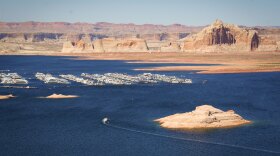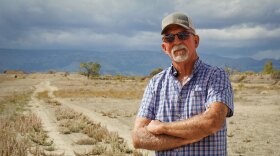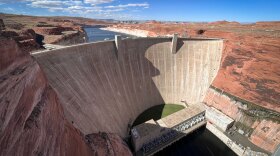-
Water leaders in the U.S. West gathered this week in Las Vegas with a hefty task hanging over their heads — figuring out a long-term plan for sharing water from the Colorado River.
-
“We're closer to the edge of the cliff than we realize,” said one Colorado River expert who worked on a new report outlining what 2026 could hold for Utah’s Lake Powell.
-
Projects across Utah’s Colorado River Basin meant to protect water supplies and restore rivers are in a holding pattern — including a $200 million reservoir near Price, Utah.
-
“We're just trying to be proactive,” said one Carbon County farmer. “Hopefully, we can make some kind of difference in the big picture.”
-
Northern Utah has a small fraction of the snowpack it typically has this time of year. That’s bad news for ski season and water supplies.
-
Around half of Utah’s counties have met their 2030 conservation goals. Taking a closer look at who is succeeding and struggling offers a glimpse of why it’s hard to save water in Utah.
-
Utah and the 6 states that share the river missed a federal Nov. 11 deadline to make progress on a new water agreement. Gov. Katie Hobbs said she has a hard time believing the Upper Basin states can't reduce water use.
-
Because of drought, mandatory water cuts are nothing new in Utah. But the potential of large-scale reductions across the Colorado River Basin would present a steep challenge.
-
Drought and steady demand along the Colorado River are draining the nation's second-largest reservoir. Land that was once submerged is now full of beavers and thriving ecosystems.
-
October set the stage for Utah to have a solid spring snowmelt runoff. That is, if the state can catch enough snow this winter.
-
During droughts and disasters, the Washington County Water Conservancy District’s draft plan could cut up to 60% of the water cities get and leave it up to city leaders to figure out how to get by with less.
-
The water year that ended Sept. 30 was one of the driest on record for parts of the state, including Salt Lake City and St. George.
Play Live Radio
Next Up:
0:00
0:00
Available On Air Stations












